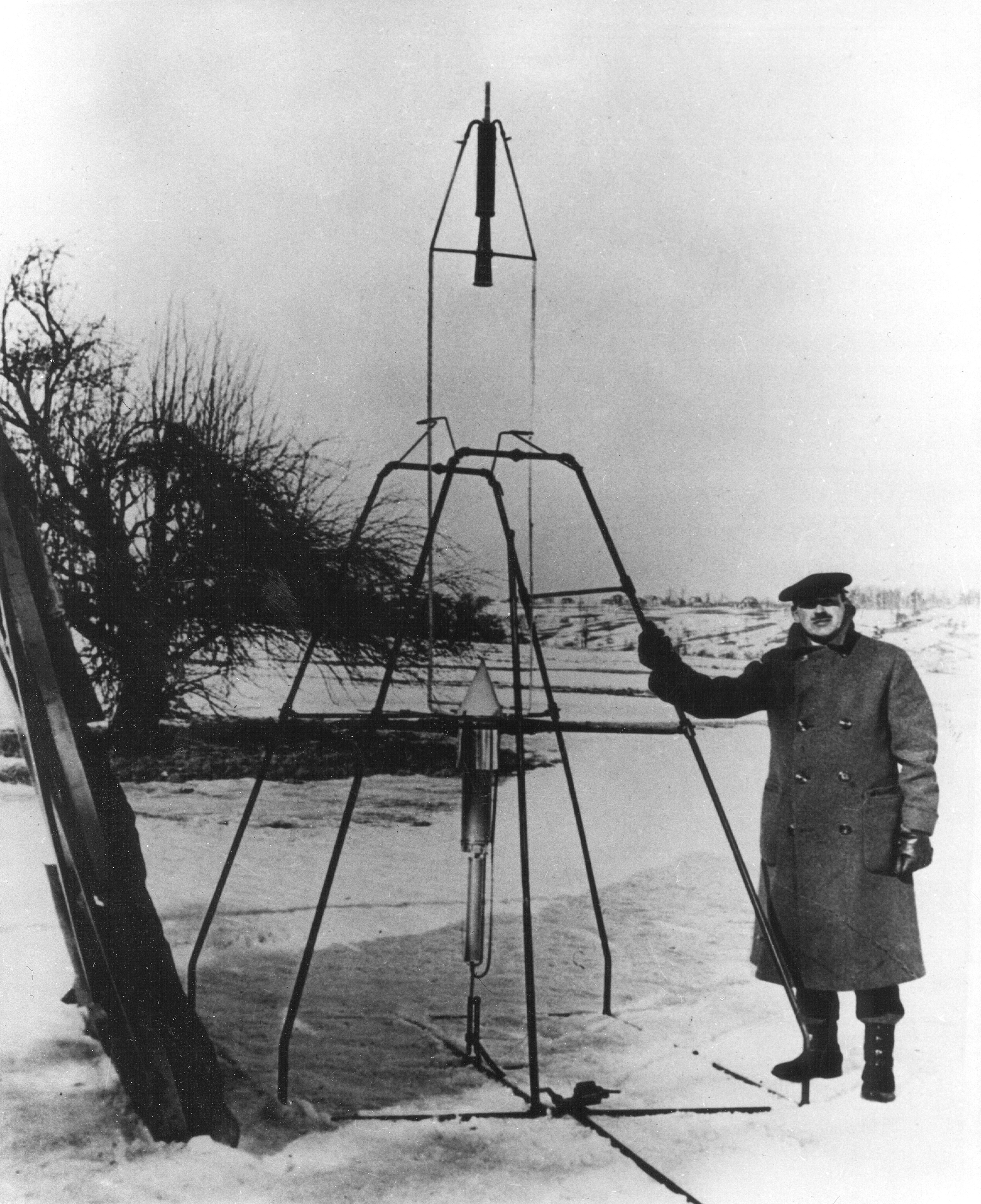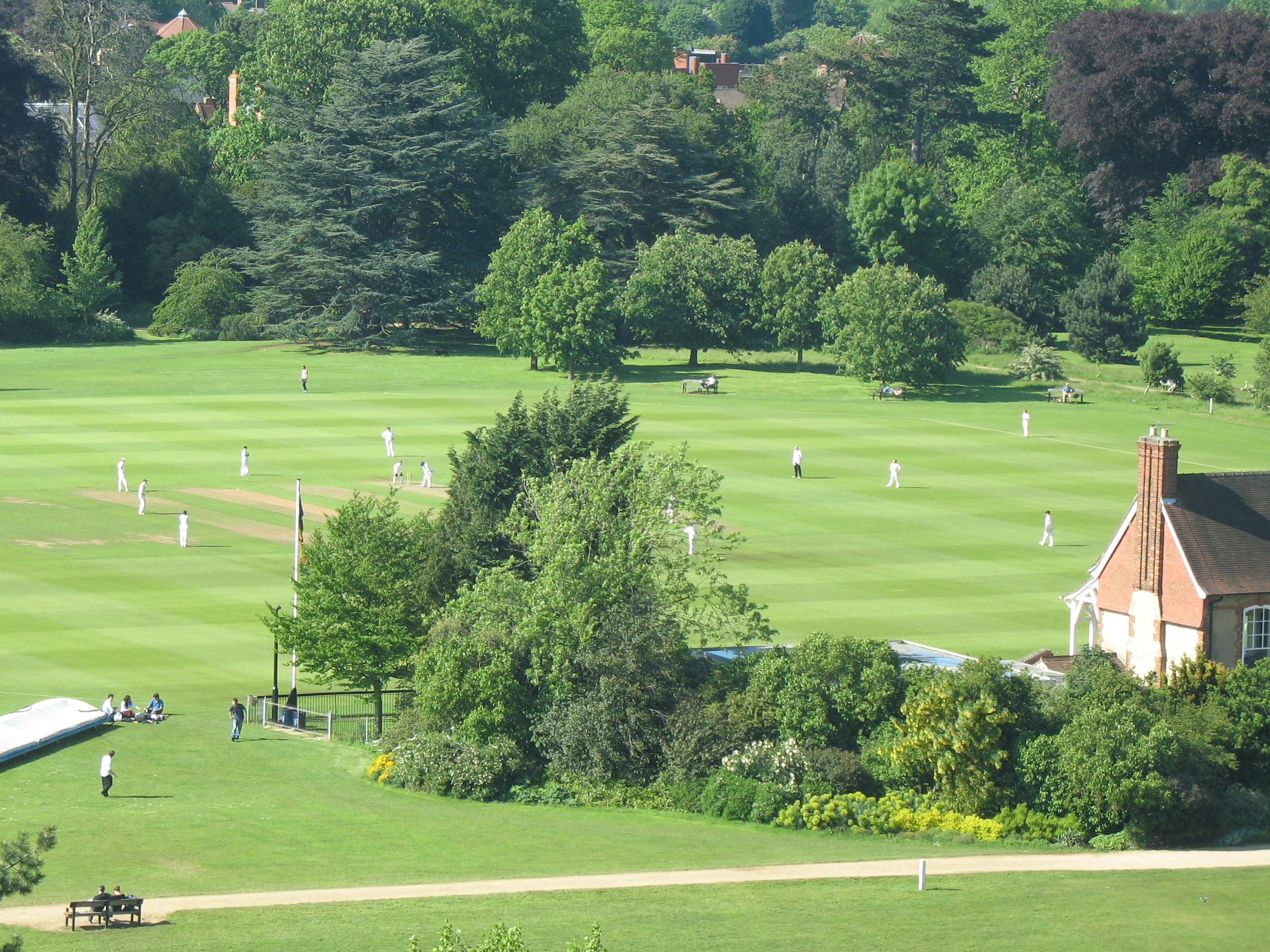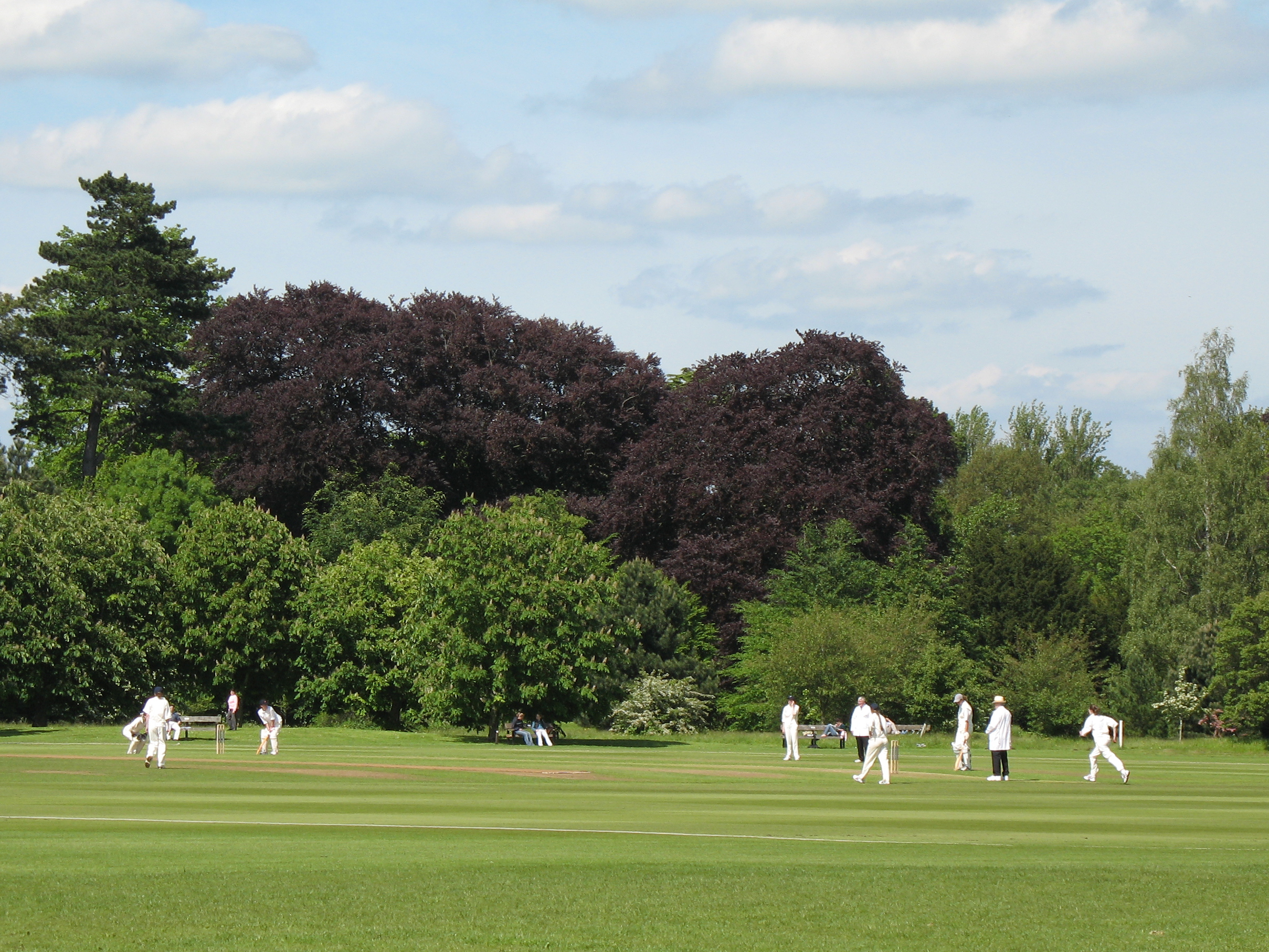|
Gordon Hayward (cricketer)
James Gordon Rotherham Hayward (31 December 1926 – 29 September 2014) was an English cricketer. Hayward was a left-handed Batsman (cricket), batsman who bowled right-arm Fast bowling, fast-medium. He was born at Speeton, East Riding of Yorkshire. Hayward made a single first-class cricket, first-class appearance for Nottinghamshire County Cricket Club, Nottinghamshire against Oxford University Cricket Club, Oxford University 1951 at the University Parks. Hayward wasn't called upon to bat during the match, but did take two wickets in Oxford University's first-innings, dismissing John Marshall (cricketer, born 1929), John Marshall and Richard Wollocombe to finish with figures of 2/78 from 36 over (cricket), overs. His only first-class appearance ended in a draw. Hayward died on 29 September 2014, at the age of 87. References External links * 1926 births 2014 deaths People from the East Riding of Yorkshire (before 1974) English cricketers Nottinghamshire cricketers Crick ... [...More Info...] [...Related Items...] OR: [Wikipedia] [Google] [Baidu] |
Speeton
Speeton is a village in the civil parish of Reighton, in North Yorkshire, England. It lies near the edge of the coastal cliffs midway between Filey and Bridlington. It is North Yorkshire's easternmost settlement, but historically lay in the East Riding of Yorkshire until local government re-organisation in 1974. Speeton railway station on the Yorkshire Coast Line from Hull to Scarborough served the village until it closed on 5 January 1970. A local geological feature, the Speeton Clay (approximately 130 million years old), was the source of an especially interesting fossil of the Hermit crab. Second World War The Second World War defences constructed around Speeton have been documented by William Foot. They included a large number of pillboxes. Many of the remaining defences have been subject to coastal erosion. St Leonard's Church The church of St Leonard's at Speeton is one of the smallest parish churches in Yorkshire and was erected in the early Norman perio ... [...More Info...] [...Related Items...] OR: [Wikipedia] [Google] [Baidu] |
Richard Wollocombe
Richard Henry Wollocombe (12 January 1926 – 7 June 2002) was an English first-class cricketer. Born at Pachmarhi in British India, Wollocombe was educated in England at Wellington College, Berkshire. He captained the Wellington College cricket team in 1943, He served during the closing stages of World War II as a second lieutenant in the Royal Artillery. Following the war, Wollocombe briefly worked in advertising, before going up to Worcester College, Oxford. Having played minor counties cricket for Berkshire in 1950, he debuted in first-class cricket for Oxford University against Lancashire at Oxford in 1951. He played three further matches in 1951, followed by four more in 1952. Playing as a leg spinning all-rounder, Wollocombe 276 runs in eight matches for Oxford, coming at an average of 21.23. He scored 119 runs in a little over two hours against Worcestershire in 1952. With his leg breaks, he took 9 wickets at the expensive bowling average of 52.55. Despite his centu ... [...More Info...] [...Related Items...] OR: [Wikipedia] [Google] [Baidu] |
Nottinghamshire Cricketers
Nottinghamshire (; abbreviated Notts.) is a landlocked county in the East Midlands region of England, bordering South Yorkshire to the north-west, Lincolnshire to the east, Leicestershire to the south, and Derbyshire to the west. The traditional county town is Nottingham, though the county council is based at County Hall in West Bridgford in the borough of Rushcliffe, at a site facing Nottingham over the River Trent. The districts of Nottinghamshire are Ashfield, Bassetlaw, Broxtowe, Gedling, Mansfield, Newark and Sherwood, and Rushcliffe. The City of Nottingham was administratively part of Nottinghamshire between 1974 and 1998, but is now a unitary authority, remaining part of Nottinghamshire for ceremonial purposes. The county saw a minor change in its coverage as Finningley was moved from the county into South Yorkshire and is part of the City of Doncaster. This is also where the now-closed Doncaster Sheffield Airport is located (formerly Robin Hood Airport). In ... [...More Info...] [...Related Items...] OR: [Wikipedia] [Google] [Baidu] |
English Cricketers
English usually refers to: * English language * English people English may also refer to: Peoples, culture, and language * ''English'', an adjective for something of, from, or related to England ** English national identity, an identity and common culture ** English language in England, a variant of the English language spoken in England * English languages (other) * English studies, the study of English language and literature * ''English'', an Amish term for non-Amish, regardless of ethnicity Individuals * English (surname), a list of notable people with the surname ''English'' * People with the given name ** English McConnell (1882–1928), Irish footballer ** English Fisher (1928–2011), American boxing coach ** English Gardner (b. 1992), American track and field sprinter Places United States * English, Indiana, a town * English, Kentucky, an unincorporated community * English, Brazoria County, Texas, an unincorporated communit ... [...More Info...] [...Related Items...] OR: [Wikipedia] [Google] [Baidu] |
People From The East Riding Of Yorkshire (before 1974)
A person ( : people) is a being that has certain capacities or attributes such as reason, morality, consciousness or self-consciousness, and being a part of a culturally established form of social relations such as kinship, ownership of property, or legal responsibility. The defining features of personhood and, consequently, what makes a person count as a person, differ widely among cultures and contexts. In addition to the question of personhood, of what makes a being count as a person to begin with, there are further questions about personal identity and self: both about what makes any particular person that particular person instead of another, and about what makes a person at one time the same person as they were or will be at another time despite any intervening changes. The plural form "people" is often used to refer to an entire nation or ethnic group (as in "a people"), and this was the original meaning of the word; it subsequently acquired its use as a plural form of p ... [...More Info...] [...Related Items...] OR: [Wikipedia] [Google] [Baidu] |
2014 Deaths
This is a list of deaths of notable people, organised by year. New deaths articles are added to their respective month (e.g., Deaths in ) and then linked here. 2022 2021 2020 2019 2018 2017 2016 2015 2014 2013 2012 2011 2010 2009 2008 2007 2006 2005 2004 2003 2002 2001 2000 1999 1998 1997 1996 1995 1994 1993 1992 1991 1990 1989 1988 1987 See also * Lists of deaths by day * Deaths by year {{DEFAULTSORT:deaths by year ... [...More Info...] [...Related Items...] OR: [Wikipedia] [Google] [Baidu] |
1926 Births
Events January * January 3 – Theodoros Pangalos declares himself dictator in Greece. * January 8 **Abdul-Aziz ibn Saud is crowned King of Hejaz. ** Crown Prince Nguyễn Phúc Vĩnh Thuy ascends the throne, the last monarch of Vietnam. * January 12 – Freeman Gosden and Charles Correll premiere their radio program ''Sam 'n' Henry'', in which the two white performers portray two black characters from Harlem looking to strike it rich in the big city (it is a precursor to Gosden and Correll's more popular later program, ''Amos 'n' Andy''). * January 16 – A BBC comic radio play broadcast by Ronald Knox, about a workers' revolution, causes a panic in London. * January 21 – The Belgian Parliament accepts the Locarno Treaties. * January 26 – Scottish inventor John Logie Baird demonstrates a mechanical television system at his London laboratory for members of the Royal Institution and a reporter from ''The Times''. * January 29 – Eugene O'Neill's ... [...More Info...] [...Related Items...] OR: [Wikipedia] [Google] [Baidu] |
Over (cricket)
In cricket, an over consists of six legal deliveries bowled from one end of a cricket pitch to the player batting at the other end, almost always by a single bowler. A maiden over is an over in which no runs are scored that count against the bowler (so leg byes and byes may be scored as they are not counted against the bowler). A wicket maiden is a maiden over in which a wicket is also taken. Similarly, double and triple wicket maidens are when two and three wickets are taken in a maiden over. After six deliveries the umpire calls 'over'; the fielding team switches ends, and a different bowler is selected to bowl from the opposite end. The captain of the fielding team decides which bowler will bowl any given over, and no bowler may bowl two overs in succession. Overview Although this has not always been so, with overs of four and eight balls used in the past, currently an over must consist of six legal deliveries. If the bowler bowls a wide or a no-ball, that illegal d ... [...More Info...] [...Related Items...] OR: [Wikipedia] [Google] [Baidu] |
John Marshall (cricketer, Born 1929)
John Marshall (September 24, 1755July 6, 1835) was an American politician and lawyer who served as the fourth chief justice of the United States from 1801 until his death in 1835. He remains the longest-serving chief justice and fourth-longest serving justice in the history of the U.S. Supreme Court, and is widely regarded as one of the most influential justices ever to serve. Prior to joining the court, Marshall briefly served as both the U.S. secretary of state under President John Adams, and a representative, in the U.S. House of Representatives from Virginia, thereby making him one of the few Americans to serve on all three branches of the United States federal government. Marshall was born in Germantown in the Colony of Virginia in 1755. After the outbreak of the American Revolutionary War, he joined the Continental Army, serving in numerous battles. During the later stages of the war, he was admitted to the state bar and won election to the Virginia House of Delegates. ... [...More Info...] [...Related Items...] OR: [Wikipedia] [Google] [Baidu] |
East Riding Of Yorkshire
The East Riding of Yorkshire, or simply East Riding or East Yorkshire, is a ceremonial county and unitary authority area in the Yorkshire and the Humber region of England. It borders North Yorkshire to the north and west, South Yorkshire to the south-west, and Lincolnshire to the south. The coastal towns of Bridlington, Hornsea and Withernsea are popular with tourists, the town of Howden contains Howden Minster, Market Weighton, Pocklington, Brough, Hedon and Driffield are market towns with markets held throughout the year and Hessle and Goole are important port towns for the county. The port city of Kingston upon Hull is an economic, transport and tourism centre which also receives much sea freight from around the world. The current East Riding of Yorkshire came into existence in 1996 after the abolition of the County of Humberside. The county's administration is in the ancient market town of Beverley. The landscape is mainly rural, consisting of rolling hil ... [...More Info...] [...Related Items...] OR: [Wikipedia] [Google] [Baidu] |
University Parks
The Oxford University Parks, commonly referred to locally as the University Parks, or just The Parks, is a large parkland area slightly northeast of the city centre in Oxford, England. The park is bounded to the east by the River Cherwell, though a small plot of land called Mesopotamia sits between the upper and lower levels of the river. To the north of the parks is Norham Gardens and Lady Margaret Hall, to the west the Parks Road, and the Science Area on South Parks Road to the south. The park is open to the public during the day, and has gardens, large sports fields, and exotic plants. It includes a cricket ground used by Oxford University Cricket Club. History Part of the land on which the Parks is located had been used for recreation for a long time, and it formed part of the University Walks said to have been used by Charles II to walk his dog in 1685. The land originally belonged to Merton College, and in 1853/1854, the University of Oxford purchased from Merton ... [...More Info...] [...Related Items...] OR: [Wikipedia] [Google] [Baidu] |
Oxford University Cricket Club
Oxford University Cricket Club (OUCC), which represents the University of Oxford, has always held first-class status since 1827 when it made its debut in the inaugural University Match between OUCC and Cambridge University Cricket Club (CUCC). It was classified as a List A team in 1973 only. Home fixtures are played at the University Parks slightly northeast of Oxford city centre. History The earliest reference to cricket at Oxford is in 1673. OUCC made its known debut in the inaugural University Match between Oxford and Cambridge played in 1827. In terms of extant clubs being involved, this is the oldest major fixture in the world: i.e., although some inter-county fixtures are much older, none of the current county clubs were founded before 1839 (the oldest known current fixture is Kent ''versus'' Surrey). The Magdalen Ground was used for the University Cricket Club's first match in 1829, and remain in regular use until 1880. Bullingdon Green was used for two matches i ... [...More Info...] [...Related Items...] OR: [Wikipedia] [Google] [Baidu] |
.jpg)
_1938.jpg)

.jpg)

